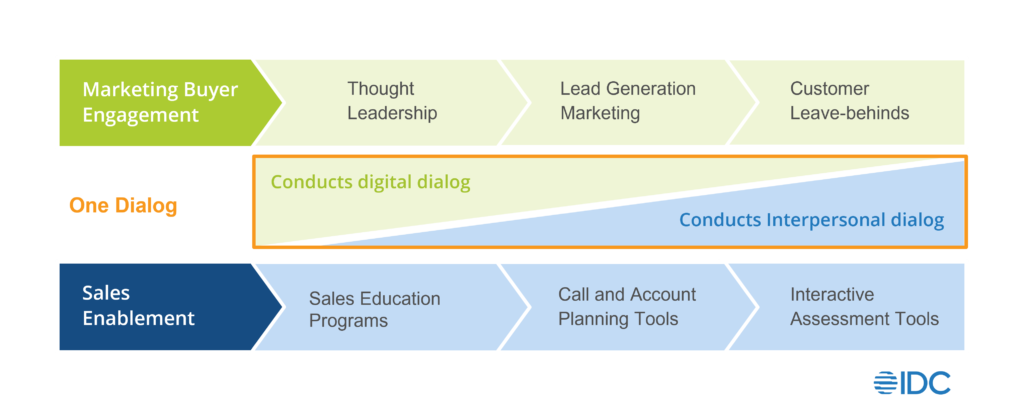Marketing and sales teams have been made to be hyperaware of the fact that consumers and buyers are inundated with content. This information overload and increasing channel mix and outreach mechanisms has been argued to have decreased attention span. What we have is a situation where sales needs leads, marketing needs to drive those leads, consumers have too much to pay attention to and an unforgiving economy created a decline in buyer response. It’s less than ideal.
You can’t alter the economy. You can’t change attention spans. So, what can you do? The answer always is look internally at what you can control. You can control your brand voice. The answers, however, always seem so simple, but the execution is the major challenge.
Brand Voice and The Acceleration of Marketing’s Digital Transformation
Content marketing is a customer-centric marketing approach focused on creating and distributing relevant, engaging, connected and edible content across channels, to help buyers achieve their objectives, paving the path toward profitable customer action. For years, the marketing industry has been talking about one voice. But it’s not one marketing voice—that would mean there should be one sales voice as well. It’s just one voice, marketing and sales. Too often, organizations can’t align the two. Essentially there is the digital dialogue that gets created by someone in a marketing function and that needs to tie into sales, who are having a more interpersonal dialogue. The promises marketing makes in their digital dialogue are the promises that sales have to keep. Yet, the interpersonal dialogues that are taking place by the sales team may be conveying different value and propositions. This problem has been accelerated through marketing’s digital transformation and with everyone living mostly online now.
To capture today’s buyers, digital and interpersonal engagement strategies must be aligned
Conversations to buyers today are happening in parallel, and what results is critical—the buying community doesn’t receive the message they need or expect from the organization (or brand). You may witness this through lack of engagement. Here you have an abundance of marketing content that is in market, several sales pitches and yet no one is engaging at a volume that matches the effort.
There is a significant gap in communication during the sales process between marketing and sales. Marketing data is not used. Sales is frustrated with support from marketing. Ultimately, the sales and marketing “disconnect” prevents revenue generation from being optimal. There is a critical need for marketers and sales, together, to engage more effectively with their audience, and align on the same value proposition.
Learn More: IDC’s MarketScape Lead Generation Package

Buyers are simply trying to do two things: 1. explore and evaluate solutions, then 2. purchase and optimize them. Sales is trying to adapt to selling in this hyper digital world as B2B commerce moves increasingly online. It’s a marketer’s job to understand the buyer’s intent signals as they move along in their journey. While marketers have to activate these buyers at the right time, many will find success when they figure out how best to support their sales teams. Because as you engage your buyer, you are trying to educate them by demonstrating value statements that tie to their pain points and needs. As marketers nurture this type of dialogue digitally, the buyer’s interest in the solution grows and the marketing moves them to a position where an opportunity is created for a discussion with sales. Now sales must keep the promises made in the value statements presented by marketing. If the promises don’t align, or aren’t kept, the relationship is lost.
Related Reading: How to Overcome B2B Digital Marketing Challenges
A New Marketing and Sales Model
The digital and interpersonal dialogue (marketing and sales) exists to align with the customer journey. In our ACE Framework, we introduce a new customer journey and present a new marketing and sales model, based on IDC’s latest research and deep dive into tech buyers and the transformation of digital marketing. The Adaptive Customer Engagement (ACE) model acknowledges that today’s buyers are digital-first; they are embracing digital channels for more than information gathering. Today’s digital buyers are diving into chat applications to complete buying tasks like getting quotes or attending virtual events.
74% of B2B tech buyers will buy more through eCommerce and work less with an in-person sales representative from here on out. (source: IDC Perspective. The Digital-First Era Demands a New Marketing and Sales Model: Introducing Adaptive Customer Engagement ACE))
Related Reading: Client Engagement and Meaningful Dialogue, Virtually
Marketers and sales teams today aren’t talking to just one buyer, they are now talking to an entire buying cohort. In fact, more than a dozen individuals at an organization could have a need, based on their jobs to be done. For the longest time, sales and marketing operated in a linear model, “the funnel”. But it’s not about one person progressing through a linear journey any longer. The funnel lacks customer centricity and is perhaps why marketing and sales have failed to be able to nurture and build relationships among all the members in the buying committee.
The new ACE model was created by IDC because tech buyers expect value-based solutions to their pain points and business outcomes they’re accountable for. To achieve this, there needs to be marketing and sales messaging alignment.
Through this holistic adaptive customer engagement model, you want to be able to have a closed loop relationship with buyers who become clients. Essentially, once those promises made turn into promises kept, you need to be able to measure and articulate the value that you promised. That’s when you achieve the ultimate goal, customer loyalty.
Have a question about this topic and how you can build a customer-centric plan that accounts for sales enablement along the way? Let’s Talk
Introducing a new lead generation service! To make it easier for marketers to gain the most value of their IDC MarketScape and truly drive qualified leads, we have worked with Foundry to create an enticing lead generation package leveraging their media brands that capture proven customer engagements.
Related Resources:




